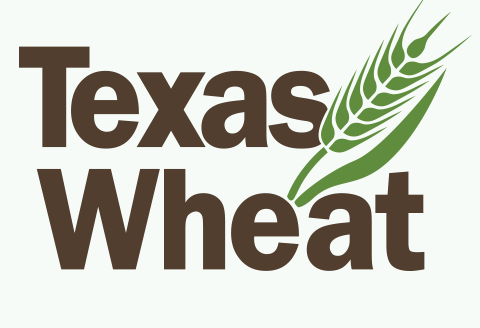The top wheat farmers in the nation were recognized for their work in the 2017 National Wheat Yield Contest during the 2018 Commodity Classic, Feb. 27, in Anaheim, California.
Steve Joehl, National Association of Wheat Growers director of Research and Technology, and contest director, reported that Mother Nature threw everything she had at the U.S. wheat crop this year.
“We had everything from dry weather in Montana to subzero temperatures in the East,” Joehl said. “And then Kansas ran the gauntlet, with wheat streak mosaic virus and volunteer wheat problems to a late blizzard May 1 that came just when the crop was out of boot and starting to head out.” And yet, U.S. wheat growers persevered through managing the crop to the best of their abilities.
Entry numbers continue to rise from 2016’s inaugural year. And new for the 2018 contest year will be the addition of a quality aspect. By focusing on the management tools and techniques growers have to improve their quality, the hope is that domestic buyers and export markets will grow demand for wheat from areas that can be identified through contest winners.
“We don’t have a database of 500 to 1,000 farmers planting wheat and the management tactics they used and the quality that resulted,” Joehl said. “We think we can improve our yield and our quality with the right management techniques. And if 50 percent of our crop is exported, that drives our market. And if our local millers and bakers can deliver better quality products to consumers, that can drive demand too.” Growers have asked for quality data to be included in the contest. The key is getting farmers adjusted to sending in 2.5-pound samples of wheat, he added.
Overall, the contest is designed to incentivize farmers to innovate on their wheat farms, to learn from each other and improve their own productivity, Joehl said. That’s what drives sponsors to help fund the contest, and it’s why the National Wheat Foundation and NAWG put so much effort into recognizing farmers for outstanding work.
Picking up the trophy for the National High Yield honors for the second year in a row was Phillip Gross, of the Warden Hutterian Brethren, Warden, Washington. Gross topped the Irrigated Winter Wheat category with his entry of Limagrain Jet in the Irrigated Winter Wheat category. This plot yielded 184.29 bushels per acre, or 247.72 percent above the average for Adams County.
Brandon Friesen, Meade, Kansas, took home first place in the Winter Wheat Dryland category. His plot of WestBred WB-Grainfield made 115.26 bushels per acre, or 311.64 percent above the Meade County average—despite a May 1 blizzard that brought the wheat to its knees.
Also placing in Winter Wheat Dryland:
—Second Place, Dusty Tallman, Sheridan Lake, Colorado, with Plains Gold Byrd. It had a yield of 72.8 bushels per acre, or 283.16 percent above the Kiowa County average.
—Third Place, Matt Schupbach, Alva, Oklahoma, with WestBred WB4303. It yielded 94.7 bushels per acre or 205.48 percent above the Alfalfa County average.
—Fourth Place, Mark Knobel, Fairbury, Nebraska, with AgriPro SY Sunrise. It yielded 119 bushels per acre, or 190.24 percent above the Jefferson County average.
—Fifth Place, Brian Cochrane, Kahlotus, Washington, with Washington State Otto. It yielded 92 bushels per acre, or 187.56 percent above the Franklin County average.
Ty Anderson, Albin, Wyoming, brought home first place in the Winter Wheat Irrigated category. His plot of Wyoming Crop Research Foundation Cowboy variety brought a whopping 146.52 bushels per acre, or 405.24 percent above the Laramie County average yield.
Also placing in Winter Wheat Irrigated:
—Second Place, Marc Arnusch, Keenesburg, Colorado, with WestBred WB4303. It yielded 162.17 bushels per acre, or 326.22 percent above the Weld County average.
—Third Place, Nathan Franklin, Atwood, Kansas, with WestBred WB Cedar. It yielded 144.07 bushels per acre, or 311.63 percent above the Rawlins County average.
—Fourth Place, Travis Freeburg, Pine Bluffs, Wyoming, with AgriPro AP503. It yielded 113.35 bushels per acre, or 290.86 percent above the Banner County average across the border in Nebraska, where Freeburg farms.
—Fifth Place, Nathan Rea, Milton-Freewater, Oregon, with Limagrain Drive. It yielded 161.99 bushels per acre or 149.22 percent above the Umatilla County average.
Paul Solem, Oslo, Minnesota, farming with Jim and Deb Solem, brought home first place in the Spring Wheat Dryland category. His plot of WestBred WB9479 yielded 103.42 bushels per acre or 88.04 percent above the Marshal County average.
Also placing in Spring Wheat Dryand:
—Second Place, Jon Iverson, Langdon, North Dakota, with Croplan 3530. It yielded 97.57 bushels per acre, or 80.69 percent above the Cavalier County average.
—Third Place, Robert Holzwarth, Hazel, South Dakota, with University of Minnesota Bolles variety. It yielded 102.58 bushels per acre, or 65.45 percent above the Hamlin County average.
—Fourth Place, Doug Stout, Genessee, Idaho, with WestBred WB9668. It yielded 114.05 bushels per acre or 60.63 percent above Latah County average.
—Fifth Place, John Yerger, Hardin, Montana, with Croplan 3100 WinPak. It yielded 58.78 bushels per acre, or 46.95 percent above the Big Horn County average.
Dan Mills, farming with Travis and Kyle Carnine, Stanfield, Oregon, brought home first place in the Spring Wheat Irrigated category. They planted WestBred Solano, for a yield of 137.85 bushels per acre, or 112.08 percent above the Umatilla County average.
Also placing in the Spring Wheat Irrigated category:
—Second Place, Terry Wilcox, Rexburg, Idaho, with WestBred WB9668. It yielded 143.91 bushels per acre, or 63.53 percent above the Madison County average.
Jennifer M. Latzke can be reached at 620-227-1807 or [email protected].


